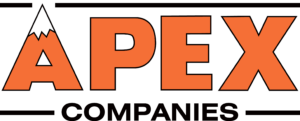Use 42” or 48” Deep Selective Pallet Rack Bays with Standard GMA-Style Pallets
According to industry experts, Selective Pallet Rack is the most common type of rack in Colorado – and for good reason! With both simplicity and versatility in its design, selective rack is the perfect choice for use in a variety of applications. This rack is composed of columns and struts that are affixed together to form uprights. Shelf beams then connecte two uprights with one in front and one in back to form the storage bays. Typically a storage bay consists of two set side-by-side pallet positions.
The height of your system will be determined by both your vertical space and the volume of inventory to store. However, you may want to put some extra consideration into the depth of your uprights. A little-known fact is that there are two options that accommodate the standard 48”x40” pallets. Read on for a deep-dive in selective pallet rack design.
The depth of your frame can vary from 42’’-48’’deep for storage applications that use standard-size pallets. There are advantages and possible challenges for both depths.
Note: If you’re using odd-sized pallets, the Apex team can help you design a custom pallet rack configuration to accommodate the pallet dimensions.
Selective Pallet Rack Frame Guidelines
Determine the upright depth needed for your pallets by subtracting 6” from the depth of the pallet. For example, if using a standard 48”x4-” GMA-style pallet, use the following formula:
Subtract (48” – 6″) = 42″ deep uprights

The image to the right illustrates this in a little more detail. The 42” depth calculated above will allow a pallet overhang of 3” in both the back and front of the rack. This is useful when considering aisle depth (front overhang) and adherence to fire safety requirements (back overhang).
Note, you must have at least 6” of open space, called flue clearance, behind the rack for fire safety purposes.
Therefore, if you’re designing a system with] back-to-back rows of selective rack, you’ll need 12’’ of flue space at minimum (6”x2) between them. One challenge when utilizing the shallower 42” deep rack is that forklift operators need to be very careful not to exceed the overhang and close up that flue space.
Height-to-Depth Ratio
If you need pallet rack frames that are taller than 20’ and choose the 42” deep configuration, your uprights will exceed the recommended 6:1 ratio for height-to-depth and will require a higher level of engineering such as larger base plates, perhaps overhead rack ties, or even unique anchors. The Apex team is always available for design and engineering assistance.
Pro’s and Cons of Utilizing a 42” Rack Depth
- PRO: Reduced amount of steel needed
- PRO: Reduced overall cost
- CON: Harder to manage open flue space
- CON: May require additional engineering for heights exceeding 20’
- PRO: Easier for the forklift to place the pallet securely on front and rear beams
In contrast, you can design the upright to have a depth of 48”, which accommodates the full pallet. While this will require more steel and increase the upfront cost of the system, there are a variety of advantages that make up for the upfront cost.
Pros and Cons of Utilizing a 48” Upright Depth:
- PRO: Easier to maintain flue space
- PRO: Neater aisle without the pallet overhang
- PRO: Safer for picking at ground level when using wire decking
- CON: Higher upfront cost due to additional steel requirements
- PRO: Easier for the forklift to flush the pallet to the front beam to ensure secure loading
There’s little to no room for error with forklift loading when using a 48” deep upright with a 48” deep pallet. The forklift operator needs to center the pallet so that it is perfectly positioned on the front and rear beams. A good way to increase safety is to add wire deck or pallet supports as a failsafe. Wire deck fits across the whole bay and prevents materials from falling through and pallet supports provide a momentary safeguard for the operator to resecure a misaligned pallets. Wire deck has the added benefit of shoring up weak pallets.
You deserve to maximize the space in your Colorado Operation – and that’s where we come in. Now that you know a little bit about designing a selective rack layout, Apex can help you execute that design. Whether you need help with engineering or implementation, one call does it all. Talk to your Apex Colorado representative today!


